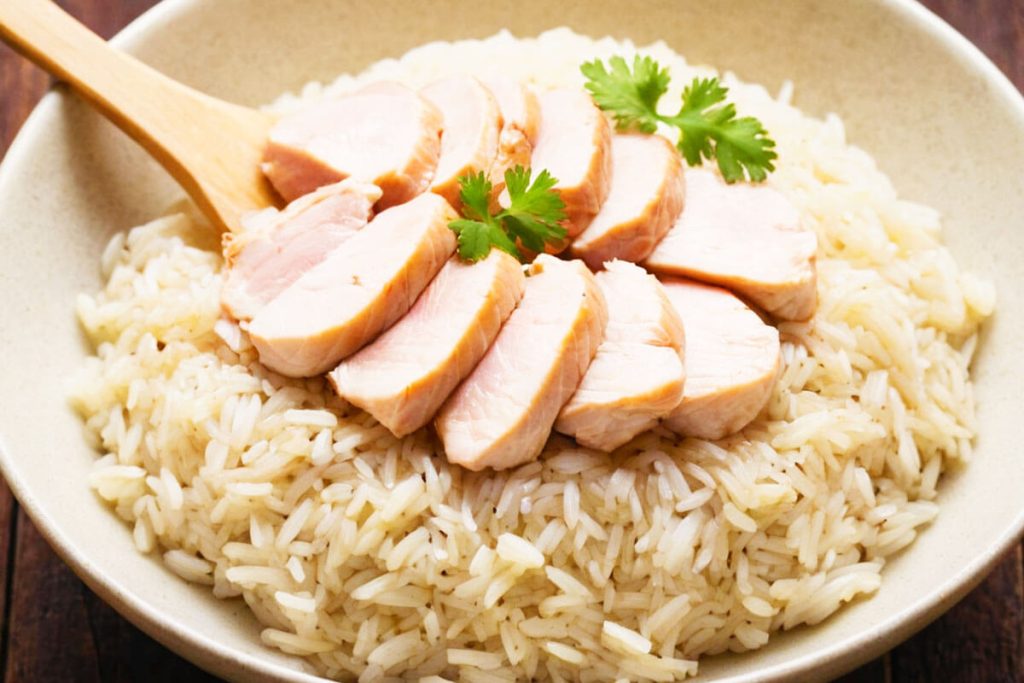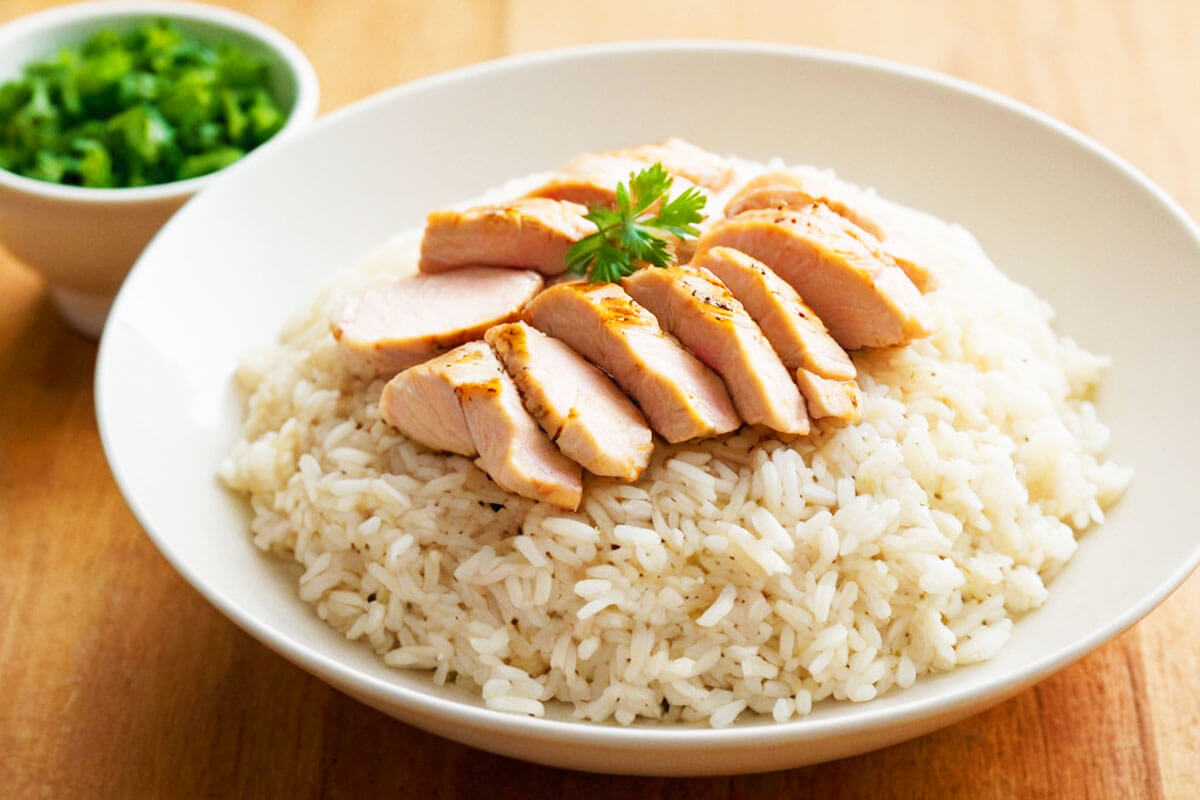Have you ever wondered if it’s safe to combine raw chicken with rice in your cooking? This article delves into the safety considerations and best practices for doing just that. We’ll explore everything from the potential risks to the proper techniques that ensure your chicken and rice dish is not only delicious but also safe to eat. So, whether you’re a seasoned chef or a home cook, this guide will equip you with the knowledge to confidently incorporate raw chicken into your rice recipes.
Can You Add Raw Chicken to Rice? Exploring Safety and Best Practices
What Is the Issue?
People worldwide commonly cook raw chicken with rice; however, they mustn’t overlook the specific safety concerns it poses. The main issue arises from the risk of foodborne illnesses due to bacteria that can linger in improperly cooked chicken. Consequently, ensuring thorough cooking of chicken is paramount to mitigate this risk.
Purpose of the Article
This guide aims to shed light on whether you can safely add raw chicken to rice, emphasizing the necessary precautions and cooking methods to mitigate any health risks. By understanding these critical aspects, you can enjoy your favorite chicken and rice dishes without worry.
In the next part, we’ll dive into the risks associated with using raw chicken in recipes, highlighting why thorough cooking and careful handling are paramount. Stay tuned to learn how to keep your culinary experiences both enjoyable and safe.
Risks of Using Raw Chicken in Recipes

Bacterial Risks: Salmonella and Campylobacter
When you toss raw chicken into your cooking pot without proper preparation, you’re playing with fire, so to speak. Bacteria like Salmonella and Campylobacter are often lurking on raw poultry. Inadequate cooking of the chicken can lead to serious stomach upset and other health issues caused by these pesky germs. To dodge these bugs, you’ve got to cook your chicken until it’s well-done — no shortcuts!
Risks of Uneven Cooking
Here’s the scoop: throwing raw chicken into a dish with other ingredients can lead to uneven cooking. Why does that matter? Well, if the chicken doesn’t cook through evenly, some parts might not reach the safe internal temperature needed to kill harmful bacteria. This could lead to food poisoning, and trust me, that’s no fun for anyone.
Risk Factors for Specific Populations
It’s especially important to be careful if you’re cooking for young kids, elderly folks, or anyone with a weakened immune system. These groups are more vulnerable and can get really sick from eating undercooked chicken. Make sure to cook the chicken fully to keep your meals safe for everyone around the table.
Next up, we’ll look at how to handle and store raw chicken the right way to keep those nasty bacteria at bay. Stick around to learn all about keeping your kitchen safe and your chicken dishes delicious!
Importance of Proper Chicken Handling and Storage
Preventing Cross-Contamination
First things first, keeping raw chicken away from your other groceries is a must. Imagine raw chicken juice getting on your fruits or veggies—yuck! Use separate cutting boards and knives for your chicken to keep everything clean and safe. And don’t forget to wash your hands well after touching raw chicken; it’s a simple step that goes a long way in keeping germs at bay.
Storage Guidelines
Now, let’s talk about keeping that chicken chilled. Ensure to store raw chicken in the coolest section of your refrigerator, typically located on the lower shelf. This way, if it drips, it won’t contaminate other foods. Got too much chicken and need to freeze some? Wrap it tightly to keep out air and freezer burn. Remember, when you’re ready to use it, thaw your chicken in the fridge or under cold water, not on the counter.
Thawing Practices
Thawing chicken the right way is just as crucial as cooking it right. Never let chicken thaw on your kitchen counter because bacteria grow quickly at room temperature. Instead, plan ahead and let it thaw slowly in the fridge, or if you’re in a pinch, use cold water or your microwave’s defrost setting. This keeps the chicken safe from bacteria as it thaws.
Up next, we’ll explore the critical role that temperature plays in cooking chicken safely. Keep reading to discover how to consistently achieve perfectly cooked chicken!
Understanding the Role of Temperature in Cooking Chicken
Why Temperature Matters
Getting the temperature right when cooking chicken is crucial—it’s the golden ticket to making sure your meal is safe to eat. Chicken needs to hit an internal temperature of 165°F (74°C) to knock out any harmful bacteria like salmonella. This isn’t just a nice-to-have; it’s a must to avoid foodborne illnesses. A meat thermometer isn’t just a fancy kitchen gadget; it’s your reliable companion for ensuring your chicken cooks thoroughly.
Using a Meat Thermometer
Using a meat thermometer is super easy and it takes the guesswork out of cooking chicken. Simply insert it into the thickest part of the meat, avoiding contact with any bones, and verify if it has reached 165°F (74°C). No more need to cut into the meat and guess its doneness based on color. Keep in mind, even if it appears cooked, it may not be safe unless it has reached the correct temperature.
Stick around! In the next part, we’ll dive into safe cooking methods for chicken and rice recipes, ensuring that every bite is deliciously safe.
Exploring Safe Cooking Methods for Chicken and Rice Recipes
Safe Cooking Techniques
When cooking raw chicken with rice, it’s essential to get both elements perfectly done. The safest bet? Bake, boil, grill, or sauté the chicken separately to make sure it reaches the magic number of 165°F (74°C) before you even think about mixing it with rice. This method keeps you in control, ensuring every piece of chicken is thoroughly cooked and safe to eat.
Recipe Tips for Safety
Once your chicken is cooked, you can add it to your rice. If you’re combining them to cook together, like in a casserole or one-pot meal, make sure to give it enough time in the oven or on the stove. Use your trusty meat thermometer again to check that the chicken tucked away in the rice has also hit the safety zone of 165°F (74°C). For a delicious one-pot meal idea, you can try this Chicken and Yellow Rice Recipe. It’s a flavorful combination that’s sure to satisfy. It’s all about making sure everything cooks evenly, so no part is left undercooked.
Next, we’ll discuss how to apply food safety guidelines throughout the entire recipe preparation process to keep your kitchen a safe zone for cooking. Stay tuned!
Utilizing Food Safety Guidelines in Recipe Preparation
Preventing Contamination in the Kitchen
Keep it clean and keep it safe! That’s the motto for any kitchen. Always start by washing your hands before you handle any food, especially raw chicken. Make sure to clean all surfaces, utensils, and cutting boards after they’ve touched the chicken. This simple habit prevents harmful germs from spreading around your kitchen and onto other foods.
Ensuring Proper Cooking Temperatures
Here’s a tip that can’t be stressed enough: use a food thermometer. It’s your most reliable tool to ensure that your chicken is cooked to a safe 165°F (74°C). Even if you’re an experienced cook, eyeballing it just doesn’t cut it when it comes to food safety. Whether you’re baking, grilling, or frying, checking the temperature with a thermometer ensures that every bite is safe to eat.
Next, we’ll tackle some common misconceptions about cooking chicken, clearing up myths and setting the record straight for safe culinary practices. Stay tuned!
Addressing Common Misconceptions About Cooking Chicken
Myths About Chicken Cooking
Let’s bust some myths! First off, some folks think if chicken’s a little pink in the middle, it’s no big deal. Not true! Chicken needs to reach an internal temperature of 165°F (74°C) to be safe. Pink or not, the only way to be sure it’s cooked properly is by checking the temperature with a thermometer.
Another myth is the idea that washing chicken before cooking can make it safer. Actually, washing chicken can splash bacteria around your sink and kitchen, increasing the risk of cross-contamination. Best to skip the rinse and just cook it thoroughly.
Reheating and Food Safety
Lastly, some people believe reheating chicken will kill all the bad stuff. While reheating can kill bacteria, it won’t destroy the toxins that bacteria might have produced if the chicken was left out too long before it was refrigerated. Always handle leftovers with care: store them quickly and reheat them to 165°F (74°C) for maximum safety.
And there you have it! By clearing up these misconceptions, you’re all set to handle and cook chicken the right way, ensuring delicious results that are safe to eat every time. Enjoy your cooking adventures!
Final Thoughts
Adding raw chicken to rice can make for a delicious meal, but it’s crucial to prioritize safety. Always remember the golden rules: cook chicken to the right temperature, avoid cross-contamination, and handle leftovers with care. By sticking to these guidelines, you can enjoy tasty chicken and rice dishes that are not only satisfying but also safe. Happy cooking!
FAQs
Can raw chicken and rice be cooked together safely?
Absolutely, but with a big emphasis on doing it right. If you’re planning to cook raw chicken with rice, make sure the chicken is chopped into small, even pieces. This helps ensure that both the chicken and the rice cook thoroughly and evenly. Always check that the chicken reaches an internal temperature of 165°F (74°C) to guarantee it’s safe to eat. Looking for some inspiration on what to pair with your yellow rice? Check out this article on top pairings and recipes for some creative ideas to elevate your meal.
What are the signs that chicken is not cooked properly?
Undercooked chicken is often glossy and its texture is jiggly. It might also retain a pinkish color inside. Remember, you can’t always tell by looking, so the best way to know for sure is to use a meat thermometer. If it reads less than 165°F (74°C) in the thickest part of the chicken, it needs more cooking time.
With these FAQs in mind, you’re better equipped to handle chicken in your kitchen safely and effectively. Remember, when in doubt, check the temperature! Enjoy your cooking and eat safely.
